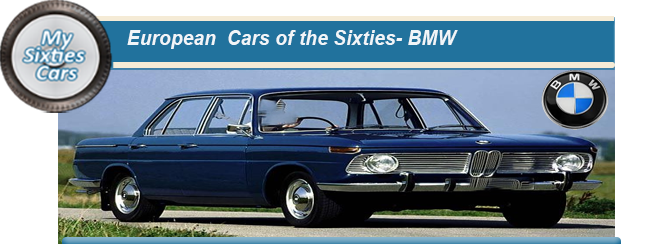 BMW, or the Bayerischen Motoren Werke (Bavarian Motor Works began to produce cars in 1922 as an offshoot of the Bayerische Flugzeugwerke (Bavarian Aircraft Factory) established six years earlier by gifted engineer Karl Friedrich Rapp.
BMW, or the Bayerischen Motoren Werke (Bavarian Motor Works began to produce cars in 1922 as an offshoot of the Bayerische Flugzeugwerke (Bavarian Aircraft Factory) established six years earlier by gifted engineer Karl Friedrich Rapp.
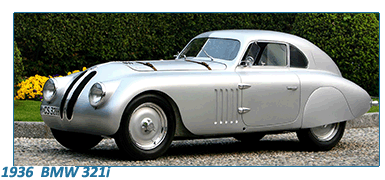 The underlying reason for the founding of the car production division was that after Germany’s defeat in World War One, as part of the terms of the surrender agreement. BAF was disallowed from producing any form of military equipment, instead concentrating their considerable production facilities on motorcycles, motor vehicles as well as marine engines.
The underlying reason for the founding of the car production division was that after Germany’s defeat in World War One, as part of the terms of the surrender agreement. BAF was disallowed from producing any form of military equipment, instead concentrating their considerable production facilities on motorcycles, motor vehicles as well as marine engines.
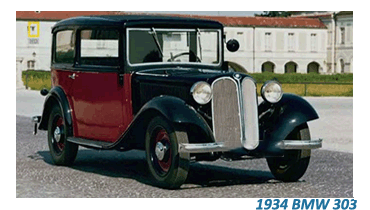 The founder Karl Friedrich Rapp was bought out by his former business manager, Franz-Josef Popp, with the semi-hostile takeover financed by Camillo Castiglioni, who, like Popp, was originally from Vienna.
With sales of their products, in particular, their motorcycles, going along smoothly, in 1928, BMW acquired the firm of Dixi, at that time the third-largest car manufacturer in Germany, who had recently signed an agreement with Austin of England to manufacture their entry-level Model 7 for the European market.
The Dixi factory based in Eisenach, in the central region of Thuringia, had tremendous production facilities at their disposal and a workforce numbering around 1200.
BMW quickly renamed the Austin 7 to become the Dixi which, when released in 1928, was their first production car. The original Dixis were powered by a 743cc four-cylinder engine producing 15 horsepower. The following year, Popp released an updated version of the Dixi, the DA/2. Among the improvements and innovations that the new version boasted were an all-steel body and 4-wheel brakes.
In 1941, BMW suspended all production of domestic vehicles ( except motorcycles) for the duration of the war. Three years later, BMW’s massive plant at Munich was almost completely destroyed as Germany were under a constant bombardment from the air.
At the end of the World War, BMW’s production facilities had been almost completely destroyed. The Allied administration imposed a three-year ban on production due to BMW’s continued involvement in developing rocket engines, which had wreaked tremendous havoc on mainland Britain.
The founder Karl Friedrich Rapp was bought out by his former business manager, Franz-Josef Popp, with the semi-hostile takeover financed by Camillo Castiglioni, who, like Popp, was originally from Vienna.
With sales of their products, in particular, their motorcycles, going along smoothly, in 1928, BMW acquired the firm of Dixi, at that time the third-largest car manufacturer in Germany, who had recently signed an agreement with Austin of England to manufacture their entry-level Model 7 for the European market.
The Dixi factory based in Eisenach, in the central region of Thuringia, had tremendous production facilities at their disposal and a workforce numbering around 1200.
BMW quickly renamed the Austin 7 to become the Dixi which, when released in 1928, was their first production car. The original Dixis were powered by a 743cc four-cylinder engine producing 15 horsepower. The following year, Popp released an updated version of the Dixi, the DA/2. Among the improvements and innovations that the new version boasted were an all-steel body and 4-wheel brakes.
In 1941, BMW suspended all production of domestic vehicles ( except motorcycles) for the duration of the war. Three years later, BMW’s massive plant at Munich was almost completely destroyed as Germany were under a constant bombardment from the air.
At the end of the World War, BMW’s production facilities had been almost completely destroyed. The Allied administration imposed a three-year ban on production due to BMW’s continued involvement in developing rocket engines, which had wreaked tremendous havoc on mainland Britain.
![]()
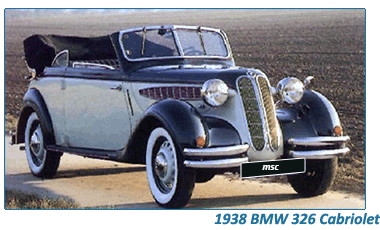 Over the next three years, BMW sold a total of 16,000 Dixis. In 1932, the company released a new model, the imaginatively titled 3/20PS.
The 3/20PS was powered by a 782cc four-cylinder engine, capable of generating a respectable 20 horsepower, capable of reaching a top speed of 50 mph (80 k/ph).
Over the next three years, BMW sold a total of 16,000 Dixis. In 1932, the company released a new model, the imaginatively titled 3/20PS.
The 3/20PS was powered by a 782cc four-cylinder engine, capable of generating a respectable 20 horsepower, capable of reaching a top speed of 50 mph (80 k/ph).
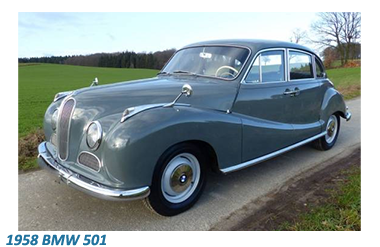 The BMW 3/20PS was a trendsetter in many ways- one of them being that it was the first car that was developed in its entirety by the company in their recently opened production centre in Munich.
1933 saw the release of another BMW landmark vehicle, the 303 saloons, the first BMW to be powered by a Fritz Fiedler designed 1173cc six-cylinder engine capable of generating 30 bhp and reaching a maximum speed of 56 mph (90 km/h).
The BMW 303 was also the first to be adorned by the trademark twin-kidney shaped radiator grilles, a design feature that would figure in many BMW models over the years.
The BMW 3/20PS was a trendsetter in many ways- one of them being that it was the first car that was developed in its entirety by the company in their recently opened production centre in Munich.
1933 saw the release of another BMW landmark vehicle, the 303 saloons, the first BMW to be powered by a Fritz Fiedler designed 1173cc six-cylinder engine capable of generating 30 bhp and reaching a maximum speed of 56 mph (90 km/h).
The BMW 303 was also the first to be adorned by the trademark twin-kidney shaped radiator grilles, a design feature that would figure in many BMW models over the years.
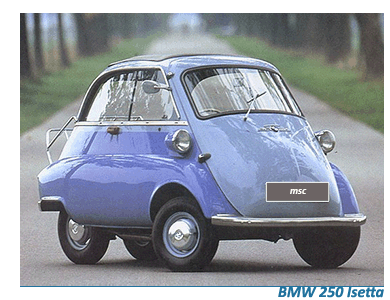 During the early years of the Thirties, BMW was on a significant production expansion drive, across all their divisions, including their aero engine unit, which had recently been reconstituted, In 1934 their car production unit was in full swing, releasing the first fully-fledged BMW roadster, the 315/1.
During the early years of the Thirties, BMW was on a significant production expansion drive, across all their divisions, including their aero engine unit, which had recently been reconstituted, In 1934 their car production unit was in full swing, releasing the first fully-fledged BMW roadster, the 315/1.
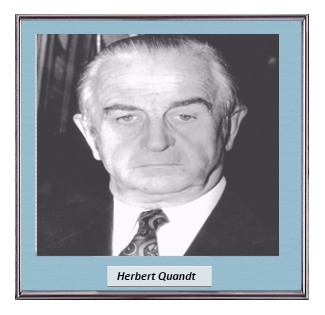 The BMW 315/1 was a far cry from its box-like predecessors, boasting a breathtakingly sleek design that was many years ahead of its time.
Powered by a 1.5 litre 6 cylinder engine, capable of developing 40bhp, the lightweight 315/1 could hit top speeds of around 75 mph (125km/h) making it one of the fastest cars of its time, and a star of the many Autobahns that were springing up all over Germany.
The following years leading up to the outbreak of World War Two were a time of many developments for BMW, beginning with the release of the 326 in 1934, the first from the company available as a saloon, a two-door or four-door convertible.
To provide employment and help rebuild the West German economy, BMW were awarded a number of contracts to carry out repairs on US army vehicles in their plant at Allach, the only plant that was in any way functional. Eventually, BMW was allowed to branch out into other forms of production, producing spare parts for bicycles and farm equipment.
The BMW 315/1 was a far cry from its box-like predecessors, boasting a breathtakingly sleek design that was many years ahead of its time.
Powered by a 1.5 litre 6 cylinder engine, capable of developing 40bhp, the lightweight 315/1 could hit top speeds of around 75 mph (125km/h) making it one of the fastest cars of its time, and a star of the many Autobahns that were springing up all over Germany.
The following years leading up to the outbreak of World War Two were a time of many developments for BMW, beginning with the release of the 326 in 1934, the first from the company available as a saloon, a two-door or four-door convertible.
To provide employment and help rebuild the West German economy, BMW were awarded a number of contracts to carry out repairs on US army vehicles in their plant at Allach, the only plant that was in any way functional. Eventually, BMW was allowed to branch out into other forms of production, producing spare parts for bicycles and farm equipment.
![]()
The original BMW car plant in Eisenach was the first to get back into production, initially building cars for the Soviet army.
In 1951 the first BMWs for the local market began to roll off the production line, marketed however as EMWs ( an abbreviation of Eisenacher Motorenwerke).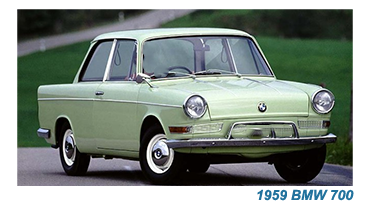 Finance for the plant came from a Russian joint-stock company, Awtowelo. The Soviet Union were quick to nationalise the new/old company which would evolve to become the 'Wartburg' car brand.
In 1951 BMW released their first post-war car model, the V8 engined 501 sedans. Lacking any form of aesthetic appeal, the 501 was a workhorse that failed to catch the imagination of the cash-strapped West German public.
Finance for the plant came from a Russian joint-stock company, Awtowelo. The Soviet Union were quick to nationalise the new/old company which would evolve to become the 'Wartburg' car brand.
In 1951 BMW released their first post-war car model, the V8 engined 501 sedans. Lacking any form of aesthetic appeal, the 501 was a workhorse that failed to catch the imagination of the cash-strapped West German public.
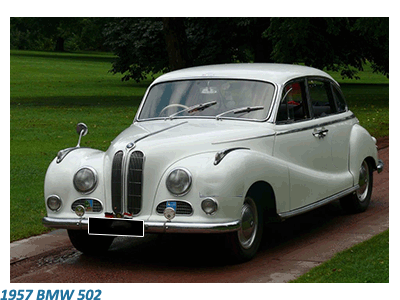 In 1954 BMW released the. 502, again an unattractive workhorse, although more economical as it was powered by a V8 light-alloy engine, the first in the World.
That was until, at the very last moment, West German financier Herbert Quandt stepped in and acquired a large block of shares in BMW shares.
Quandt’s willingness to invest in BMW and to guide the company into the future inspired confidence in the markets, and the company was able to retain its independence, going into the Sixties.
In 1954 BMW released the. 502, again an unattractive workhorse, although more economical as it was powered by a V8 light-alloy engine, the first in the World.
That was until, at the very last moment, West German financier Herbert Quandt stepped in and acquired a large block of shares in BMW shares.
Quandt’s willingness to invest in BMW and to guide the company into the future inspired confidence in the markets, and the company was able to retain its independence, going into the Sixties.
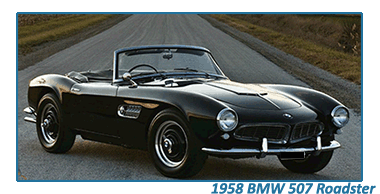 The Sixties marked a rapid and complete revival in BMW’s fortunes, with an established identity and a firm grip on the entry-level to mid-range market in West Germany and across Western Europe and the United Kingdom.
In 1961 BMW launched the 1500 sedan, geared towards the middle of the market. Light, economical and pleasant to look at, the 1500 was regarded by car industry historians as the car that set the trend for BMW throughout the Sixties and long after.
The 1500 was the first post-war BMW to be fitted with a four-cylinder engine capable of generating 80bhp.
The Sixties marked a rapid and complete revival in BMW’s fortunes, with an established identity and a firm grip on the entry-level to mid-range market in West Germany and across Western Europe and the United Kingdom.
In 1961 BMW launched the 1500 sedan, geared towards the middle of the market. Light, economical and pleasant to look at, the 1500 was regarded by car industry historians as the car that set the trend for BMW throughout the Sixties and long after.
The 1500 was the first post-war BMW to be fitted with a four-cylinder engine capable of generating 80bhp.
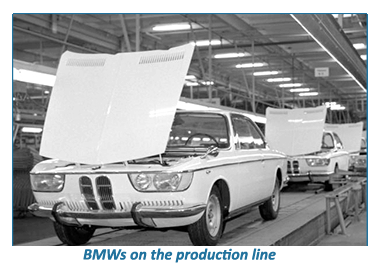 Having taken close to a decade to establish a winning formula, BMW stretched that formula to the limit, developing similarly designed cars with increasingly powerful engines, running from the 1500 cc up to 3500, with the largest version powering cars that could generate close 300 bhp.
Towards the end of the Sixties, BMW launched their new series of full-sized, Six cylinders engined sedans, known as the "New Six", comprising the 2500 and 2800 sedans, as well as the 2.5 CS and 2800 CS. Coupe.
A sign of BMW's increasing presence in the US market was the launch that year, under the “Bavarian” label, ofa coupe specially designed for export.
Having taken close to a decade to establish a winning formula, BMW stretched that formula to the limit, developing similarly designed cars with increasingly powerful engines, running from the 1500 cc up to 3500, with the largest version powering cars that could generate close 300 bhp.
Towards the end of the Sixties, BMW launched their new series of full-sized, Six cylinders engined sedans, known as the "New Six", comprising the 2500 and 2800 sedans, as well as the 2.5 CS and 2800 CS. Coupe.
A sign of BMW's increasing presence in the US market was the launch that year, under the “Bavarian” label, ofa coupe specially designed for export.






